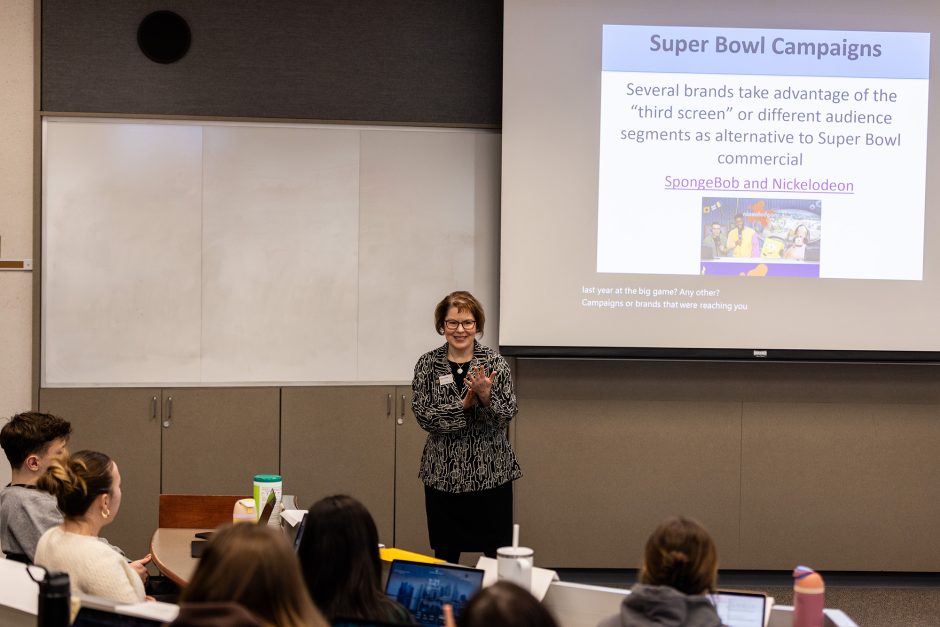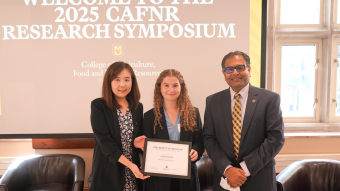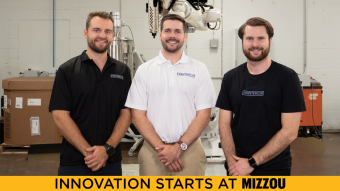
Feb. 5, 2025
Contact: Brian Consiglio, consigliob@missouri.edu
Photo by Abbie Lankitus
Katie Essing’s students don’t just watch Super Bowl commercials — they dissect them to see which ones have championship DNA. A marketing professor at the University of Missouri’s Robert J. Trulaske, Sr. College of Business, Essing helps her students learn what makes an iconic ad stick with us long after the final whistle.
So which are on Essing’s list of must-watch Super Bowl ads? Here are her top five picks and why she believes they’re among the most legendary commercials to ever grace the Super Bowl screen.
1. Budweiser’s "Puppy Love" (2014)
A Clydesdale and a puppy? A match made in commercial heaven.
Give us the ad’s highlight reel:
Essing: A playful Labrador retriever puppy and a majestic Clydesdale become best friends. They bond, then get separated. Determined to reunite with its horse pal, the puppy continually escapes. The ad culminates with the Clydesdales coming to the rescue, saving the puppy and returning it home in a heartwarming parade of friendship. Grab the tissues — this is a tear-jerker.
What made this ad stand out?
Essing: It’s all about that emotional punch! The campaign showcased how storytelling, combined with strategic marketing efforts, can create a lasting brand impression. The campaign demonstrated effective integrated marketing by creating a strong emotional connection through themes of friendship and loyalty combined with effective music. As a viewer, you’re so captivated by the story of an unlikely friendship that you forget the commercial is about beer — until the very end, that is.
2. Apple’s "1984" (1984)
Don’t blend in, break free.
Give us the ad’s highlight reel:
Essing: Inspired by George Orwell’s 1984, this ad depicts a dystopian society ruled by conformity and oppression. A large audience dressed in gray is shown mindlessly watching an authoritarian figure on a giant screen. Suddenly, a brave hero — played by Anya Major — bursts into the scene and smashes the screen with a sledgehammer, shattering conformity and declaring that Apple’s Macintosh will set individuals free from conformity.
What made this ad stand out?
Essing: The ad, directed by Ridley Scott, broke new ground with its cinematic production and bold message, using storytelling and symbolism instead of traditional product-centered promotion to position itself as a revolutionary brand challenging conformity. The theme of rebellion and empowerment resonated with viewers, reinforcing Apple’s image as a disruptor of the status quo.
3. Doritos’ “Crash the Super Bowl” Campaign (2006-2016; revived 2024-2025)
What if you made the ad?
Give us the campaign’s highlight reel:
Essing: This campaign invited consumers to produce 30-second commercials highlighting Doritos. Participants submitted their entries online, and the public voted for their favorites. The winning ads were then aired during the Super Bowl, providing amateur creators with a national platform. Notable entries include the 2009 "Free Doritos" ad, where an office worker uses a snow globe as a crystal ball to predict free Doritos, humorously leading to a vending machine mishap.
What made this campaign stand out?
Essing: By crowdsourcing the content, Doritos gave its consumers the power to be creators, fostering deep consumer engagement. By airing fan-made commercials during the Super Bowl, Doritos not only saved on production costs but also resonated with audiences through authentic, relatable content. It sparked creativity and built community in ways no other brand had before, and the success is evident in the longevity of the campaign.
4. Snickers’ "You're Not You When You're Hungry" (2010)
Betty White + tackle football = instant classic.
Give us the ad’s highlight reel:
Essing: Beloved actress Betty White, playing football with a group of young guys, takes a hard hit and ends up face-first in the mud, prompting criticism from a teammate who calls her “Mike.” Another player hands her a Snickers bar. Upon taking a bite, Betty White transforms into a young man, illustrating the campaign's tagline that "You're not you when you're hungry." The spot concludes with actor Abe Vigoda also being tackled, giving audiences one last laugh.
What made this ad stand out?
Essing: It’s hilarious and relatable. We all get hungry but seeing Betty White throw down on the football field took it to a whole new level. The tagline effectively communicated the product's benefit and quickly became a catchphrase. The campaign not only rejuvenated Snickers' brand image but also demonstrated the power of combining humor, relatable scenarios and celebrity endorsements to create a lasting impact in advertising.
5. CeraVe’s “Michael CeraVe” (2024)
This lotion ad brought the laughs (and a dolphin-unicorn).
Give us the ad’s highlight reel:
Essing: In a totally off-the-wall concept, actor Michael Cera claims to be the founder of CeraVe, a skincare line, leaning into a popular internet conspiracy. He’s seen climbing mountains and chatting with a dolphin-unicorn hybrid while talking about “developing” CeraVe products. The twist comes in a boardroom scene at the end when dermatologists step in to clarify that real experts make CeraVe products. The commercial effectively blends humor with CeraVe's core message of dermatologist-approved skincare.
What made this ad stand out?
Essing: It’s fun and quirky. The campaign capitalized on a viral internet rumor, making the brand culturally relevant and engaging for a younger demographic. Michael Cera's lighthearted persona added charm, while the ad still emphasized CeraVe’s dermatologist-backed credibility. This blend of humor, authenticity and internet culture made the campaign widely discussed and well-received. Social media buzz and influencer collaborations further amplified its impact, solidifying CeraVe’s position in both pop culture and skincare advertising.



